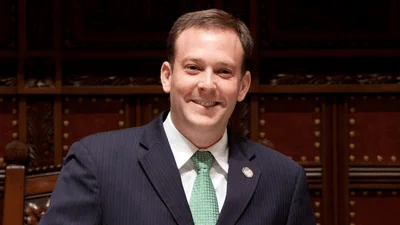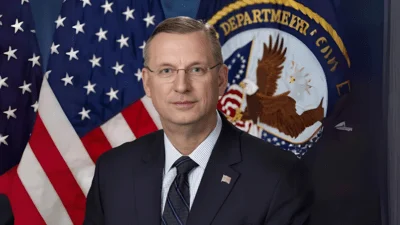Today, the U.S. Environmental Protection Agency (EPA) announced $23,186,000 to New Hampshire from President Biden's Bipartisan Infrastructure through this year's Clean Water State Revolving Fund (CWSRF). The funding will support New Hampshire communities in upgrading essential water, wastewater, and stormwater infrastructure that protects public health and treasured water bodies. Nearly half of this funding will be available as grants or principal forgiveness loans helping underserved communities across America invest in water infrastructure, while creating good-paying jobs.
"President Biden's Bipartisan Infrastructure Law is delivering an unprecedented investment in America that will revitalize essential water and wastewater infrastructure across the country," said EPA Administrator Michael S. Regan. "Not only will these funds expand access to clean water and safeguard the environment, but more underserved communities that have been left behind for far too long will be able to access them."
"The historic Bipartisan Infrastructure Law is funding critical water infrastructure projects across New England, especially in places that have been historically underserved," said EPA New England Regional Administrator David W. Cash. "Every community should know that their wastewater services are keeping the environment healthy and supporting the lives of people living nearby. We are proud to work with states, Tribes, and communities in making these unprecedented investments."
"Everyone deserves access to clean water. As a lead negotiator of the water provisions included in the bipartisan infrastructure law, I'm thrilled to see these funds head to New Hampshire," said U.S. Senator Jeanne Shaheen. "Investing in modern water infrastructure is essential for preventing pollution and driving economic development in our communities. I'll always advocate for these resources that make the Granite State healthier and more resilient for years to come."
"This latest funding will go toward much-needed wastewater infrastructure projects throughout New Hampshire, which are essential to maintaining the health and wellbeing of our communities," U.S. Senator Maggie Hassan said. "I helped to negotiate the Bipartisan Infrastructure Law because I knew that this funding would help address long overdue infrastructure improvements and strengthen our economy. I look forward to seeing the impact of these investments in the months and years to come."
"Clean water is essential for the well-being of our communities and our state, and this new funding will make critical investments to increase resiliency and improve our water infrastructure," said U.S. Congresswoman Ann McLane Kuster. "I was proud to help pass the Bipartisan Infrastructure Package to deliver for New Hampshire and will continue working to ensure every community has access to the clean water they need."
"These investments will help modernize our wastewater infrastructure, protect our waterways, and ensure our communities have clean water," said U.S. Congressman Chris Pappas. "I helped pass the bipartisan infrastructure law to deliver these resources to our state, and I'm pleased to see this federal funding coming to New Hampshire to invest in our infrastructure and improve public health."
This new influx of funding from the Bipartisan Infrastructure Law (BIL) will increase monies available for communities to undertake wastewater infrastructure upgrades in New Hampshire. Project awards are made by state evaluators to ensure they are targeted to the most needed areas. The first year of BIL funding includes a project in Newport which is anticipated for assistance through SRF BIL funding from the state's SRF programs.
Today's announcement is part of the $2.4 billion announced as part of the second wave of funding made possible by the Bipartisan Infrastructure Law and builds on the Biden-Harris Administration's commitment to invest in America. In May 2022, EPA announced the initial allotment of $1.9 billion from the Bipartisan Infrastructure Law to states, Tribes and territories through the CWSRF. That money is supporting hundreds of critical water infrastructure projects around the country.
President Biden's Bipartisan Infrastructure Law makes over $50 billion available for water and wastewater infrastructure improvements across the country between FY2022 and FY2026. EPA is committed to ensuring every community has access to this historic investment and has centralized increasing investment in disadvantaged communities within its implementation. This investment in water infrastructure is creating jobs while addressing key challenges, including climate change and emerging contaminants like per- and poly-fluoroalkyl substances (PFAS). The implementation of the Bipartisan Infrastructure Law calls for strong collaboration, and EPA continues to work in partnership with states, Tribes, and territories to ensure that communities see the full benefits of this investment.
In addition to today's announcement, the 2023 Drinking Water State Revolving Fund allocations and program updates are forthcoming, pending the release of the seventh Drinking Water Infrastructure Needs Survey and Assessment. EPA anticipates releasing the information in the coming weeks.
More information:
The CWSRFs have been the foundation of water infrastructure investments for more than 30 years, providing low-cost financing for local projects across America. The Bipartisan Infrastructure Law presents the largest ever funding opportunity for investing in water infrastructure. Find state-by-state allocation of 2023 funding, and a breakdown of EPA CWSRF funding available through the Bipartisan Infrastructure Law at: https://www.epa.gov/cwsrf.
The Bipartisan Infrastructure law provides EPA with more than $60 billion over five years for a wide range of environmental programs that will bring much-needed funding to America's water infrastructure, environmental cleanups, and clean air protections, while also advancing environmental justice and combatting climate change. Find out more about Bipartisan Infrastructure Law programs and how EPA is working with communities at https://www.epa.gov/infrastructure.
Original source can be found here.








